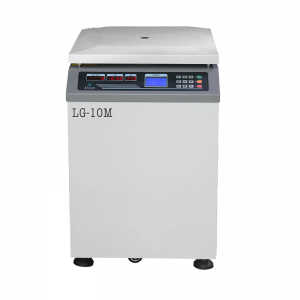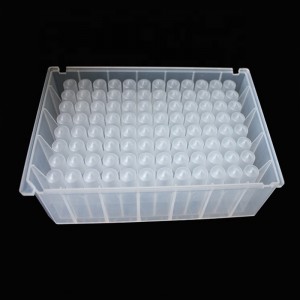The American Biological Safety Association (ABSA) presents October as Biosafety and Biosecurity Month. This year's focus is on the role of biosafety and biosecurity in mitigating emerging risk. Please join the Office of Environmental Health and Safety in recognizing the role of biosafety, biosecurity and biosafety professionals in responding to emerging risks in our laboratories, campus community and outside community. Since the beginning of 2020, the CoVID-19 pandemic has drastically altered our work.
In both our professional and personal lives we have been asked to make significant changes to mitigate the risks associated with this pandemic. It has become increasingly clear that tacking the pandemic and reducing the spread requires teamwork and cooperation. Biosafety and biosecurity professionals have played a critical role in assuaging the effects of the pandemic and have been called upon to work on new and challenging problems to protect our communities. Liquid Handling

Join us in the month of October to celebrate biosafety, biosecurity and those that devote their life to making the lab a safer and more secure environment.
Biosafety is the discipline that addresses the safe handling and containment of infectious microorganisms and hazardous biological materials. This includes how we handle animals, plants, cell culture, bacteria, viruses, fungi, parasites and public health crisis such as CoVID-19. The goal of biosafety is to reduce or eliminate exposure of lab personnel, the community and the environment to potentially infectious or hazardous agents and this is achieved via the principles of containment and risk assessment.
Biosecurity is defined as the strategic approach to analyzing and managing risks to human heath, animal and plant life and the associated risks to the environment. It is based on recognition that hazards have the potential to be deliberately or accidentally misused resulting in harm. Specifically, laboratory biosecurity is a set of systems and practices employed in research facilities to protect microbial agents from loss, theft, diversion or intentional misuse.
Yes, biosafety and biosecurity share a lot of common concepts, however they are not identical. Biosafety is achieved by: implementing various degrees of laboratory controls and containment; through the lab design and access restrictions; via personnel expertise; through the use of specialized containment equipment (such as biosafety cabinets); and defined operating procedures. Biosecurity is accomplished by limiting access to the research facility, research materials and information associated with that agent and/or research.
Before we discuss ways in which we can reduce risk, let's broadly define a few basic terms:
In the laboratory setting, risk is the probability that you, as the lab worker, will be exposed to a hazardous agent. Lab risks come in 3 forms: 1. Hazards presented by the agents themselves; 2. hazards presented by the research procedures; and finally, hazards that are associated with you and your expertise in the subject matter. A risk assessment is process used to identify and evaluate the hazard characteristics of a known infectious or potentially infectious agent or material, the activities that can result in a person's exposure, the likelihood that such exposure will cause a laboratory acquired infection and the probably consequences of such an infection. The information provided by the risk assessment will provide a guide for selection of appropriate practices and facility requirements to reduce or eliminate the risk to you, the community and the environment safe from the hazard in question.
Risk is all around you all the time and many of these situations involve contact with biohazards. Let's pretend that you are on campus headed to your first class of the day. It's a beautiful, sunny day and you are wearing shorts, listening to music and not really focused on anything but your upcoming weekend plans. Suddenly, you trip over a curb and you fall and skin your knee pretty badly. You get up, not thinking much of it, but blood is dripping down your leg. At this point you head off to the nearest bathroom to clean yourself up. You know that your instructor is not going to let you in class with a bloody leg and you want to avoid the possibility of an infection. You are all too familiar with what happens when you do not clean a wound as a result of a childhood experience with a sidewalk. The following week when you head to that same class, you are actively paying attention to where you are walking. You also decided that it would be a good idea to wear pants and a take a different route to class to prevent the same curb from getting you twice.
Guess what? You have just performed a risk assessment of your situation without even thinking about it. You assessed the hazardous characteristics of the potentially infectious material (blood) and the hazards that are associated with your accident (tripping over the curb and potentially getting an infection from your scrape). You are then using your expertise (in this case, previous first hand experience and knowledge passed down to you by your guardians) to assign appropriate practices (disinfecting the wound) and facility requirements (bandages) to keep you and your peers safe. Additionally, you mitigated the risk of acquiring an infection by cleaning the wound and you reduced your risk of falling and skinning you knee again by paying closer attention to where you walk, choosing to wear pants and by taking a different route to class.
Ladies and Gentlemen, that is risk, risk assessment and risk mitigation in a nutshell and you have just become familiar with the foundation of biosafety.
OK guys and gals, let's get about as real world as you can get right now and talk about the CoVID19 pandemic. Let's go back to your skinned knee for a minute. The same principles that you applied to assess your knee are also going to be applicable to the pandemic. Although the risk assessment for CoVID is more complex and on a larger scale, the foundation is the same.
Step 1- Hazard Identification (What is this virus about?)
When you are trying to identify what hazards are associated with the virus, the first thing you should do is think about what you know about the virus. What part of the body does it affect? How does it spread? Are there available treatments if I get sick? If you don't know the answer to any of these questions or you want more information, then check reliable resources. For CoVID19 information you can check out the Center for Disease Control or the Louisiana Department of Health for more information.
Step 2- Procedural Hazards (What am I doing that has the potential to expose me to the virus?
Procedural hazards are going to be ever changing based on your daily routine and the choices you make. Every single person requires the basic necessities to survive--food, water and shelter. If you live at home alone your risks are different then if you live with 3 roommates or family. What about a quick trip to the grocery store or a day at the office? How does that impact your risk of coming into contact with the virus?
Step 3- Personnel Hazards (What choices am I making that have the potential to impact my risk?)
The choices that you make and ultimately, the choices that others make will also play a role in your risk of exposure. Let's revisit the grocery store. You go in and do your shopping and you wear your mask, but while in line at the checkout you notice the lady behind you didn't. Or you attend a small party with about 15 people. It's an outdoor gathering and everyone is maintaining their distance, but one of the folks present is going around hugging everyone and touching all the food and drink.
Step 4- Risk Control
Steps 1 through 3 are not meant to scare you into staying in your house until the end of time. This information is meant to get you thinking about your everyday actions and routine. A risk assessment is a tool for you to use to help you identify the risks around you and take steps to control those risks.
For example, LSU has completed an extensive risk assessment and has taken steps to reduce those risks. As a part of the CoVID19 prevention protocol, LSU has implemented the use of face coverings for anyone on campus and they have intensified cleaning efforts. LSU has also moved to hybrid course work that takes place online when possible and has provided testing for those who would like to, or require testing. Additional information regarding the LSU CoVID19 Prevention Protocols can be found at the LSU-Roadmap to Fall website.
Pictured here is Dr. Fish celebrating her recent graduation with her PhD from the LSU School of Veterinary Medicine.
Biosafety just kind of came my way. After I graduated I went to work for as a postdoc for Dr. Deepak Kaushal at the Tulane National Primate Research Center studying tuberculosis. Shortly after I arrived at my new job, Dr. Kaushal informed me that he had taken the position as the Director of the Southwest National Primate Research Center in San Antonio, Texas and offered to take me with him as his lab manager. The responsibilities that came with that job and getting a lab set up at a new research facility is where I discovered that I really liked the regulatory side of science. Eventually I decided that it was time for me to pursue this new found passion and that is how I ended up at LSU.
I was born and raised in Texas. I spent most of my life in a small suburb just south of Houston, called Dickinson. When i graduated high school I came to LSU to pursue a Bachelors in Biological Sciences. It was then that I grew to love this city and campus and the reason that I now call Baton Rouge home.
I am a very active person. I play on a women's and co-ed soccer team with the Baton Rouge Soccer Club. I also like to run and ride my bike. In additional to those activities, I'm also an avid reader and I'm starting to get back into drawing.
In high school, I was a wild child and always on the go. I was a member of the soccer team, swim team and I ran track. I also played on a Division I competitive soccer team outside of school. I was not what you would call a straight A student, but my grades were decent and I was able to get into my first choice college.
It's a toss up between a lion and a tiger. I am fierce, confident and passionate which makes me a tiger. But I'm also loyal and honest with makes me like a lion. Guess that makes me a Liger?
It's definitely a tie between a mini Twix or Reese's not that I would turn down any piece of chocolate.
What biosafety and biosecurity means to you and how it has affected your life.
I authorize that all information provided on this form, including any and all personal data may be shared with the LSU Office of Environmental Health and Safety and published anonymously on the Biological Safety and Biosafety webpages to facilitate community engagement through shared experiences. This data will be securely retained indefinitely. To learn more about privacy at LSU, please see the LSU Privacy Statement.
Louisiana State University Baton Rouge, Louisiana 70803 Website Feedback Report ADA Accessibility Concerns Accessibility Statement Non-Discrimination Notice Our Commitment to Engagement Privacy Statement
Environmental Health and Safety Administrative Support Building Louisiana State University Baton Rouge, LA 70803 Telephone: 225-578-5640 Fax: 225-578-7489

PETG Media Bottles Copyright © Louisiana State University . All Rights Reserved.